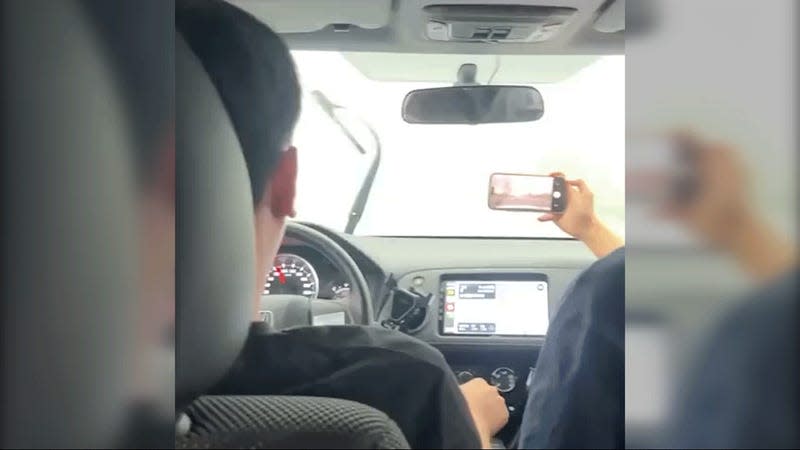Here's Why A Cell Phone Sees The Road Better Than You Do In Bad Weather
Outline:
- Introduction to the viral video of people driving through torrential rain in China using a cell phone camera to see the road.
- Explanation of how cell phone cameras can see through bad weather better than human eyes.
- The science behind polarized light and how it affects visibility.
- How cell phone cameras use polarizing filters to improve visibility.
- Alternative solutions for improving visibility in bad weather.
- Conclusion and safety recommendations.
Article:
Introduction
A recent video of two people driving through torrential rain in China has gone viral, showcasing a unique method to navigate through hazardous weather conditions. The passengers used their cell phone camera to see through the rain, providing a clearer view of the road than what the naked eye could perceive. This innovative approach, while intriguing, raises questions about how cell phones can outperform human vision in such challenging conditions.
The Science Behind Visibility
To understand how a cell phone camera can see better than human eyes in bad weather, we need to delve into the science of light and polarization. Light is an electromagnetic wave that oscillates in all directions, known as unpolarized light. When this light interacts with particles such as water droplets in rain, it becomes polarized, scattering in various directions and creating glare and haze that impair visibility.
Polarization and Cell Phone Cameras
Cell phone cameras are equipped with polarizing filters, which are designed to allow only light that oscillates in a specific direction to pass through. This filtering process reduces the visual noise caused by polarized light, making it easier to see through the haze and rain. The polarizing filter in a cell phone camera acts like a barrier, allowing only certain "types" of light to reach the lens, thereby enhancing the clarity of the image.
Alternative Solutions
While using a cell phone camera to see through bad weather is an interesting hack, it is not the safest option. A more practical and safer alternative would be to use sunglasses with polarized lenses or apply polarized window tint to the car. These methods also reduce the glare and improve visibility without the need to rely on a cell phone. However, it's important to note that using polarized sunglasses and a car with a polarized windshield can sometimes lead to reduced visibility, especially for drivers using heads-up displays.
Conclusion and Safety Recommendations
The ability of a cell phone camera to see through bad weather better than human eyes is a fascinating application of physics and technology. However, it is crucial to prioritize safety while driving in adverse conditions. Using polarized lenses or tints can be effective, but always ensure that visibility is not compromised. Ultimately, the best practice is to drive cautiously and avoid travel during severe weather whenever possible.
Stay Updated
For more insights and the latest news on automotive and technology, follow us on Facebook, Twitter, and Instagram.
